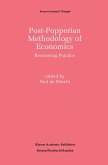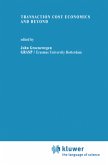Policy scientists have long been concerned with understanding the basic tools, or instruments, that governments can use to accomplish their goals. The initial interest in inductively developing comprehensive lists of generic instruments for policy analysis soon gave way to efforts to discover more parsimonious, but still useful, specifications of the elementary components out of which instruments can be assembled. Moving from a generic instrument to a fully specified policy alternative, however, requires the designer to go much beyond the elementary components. Rather than directly specifying some of these details, the designer may instead set the rules by which they will be specified. The creation of these specifications and rules can be thought of as institutional design. This book helps scholars and policy analysts formulate more effective policy alternatives by a better understanding of institutional design.
The feasibility and effectiveness of policies depend on the political, economic, and social contexts in which they are embedded. These contexts provide an environment of existing institutions that offer opportunities and barriers to institutional design. A fundamental understanding of institutional design requires theories of institutions and institutional change. With a resurgence of interest in institutions in recent years, there are many possible sources of theory. The contributors to this volume draw from the variety of sources to identify implications for understanding institutional design.
The feasibility and effectiveness of policies depend on the political, economic, and social contexts in which they are embedded. These contexts provide an environment of existing institutions that offer opportunities and barriers to institutional design. A fundamental understanding of institutional design requires theories of institutions and institutional change. With a resurgence of interest in institutions in recent years, there are many possible sources of theory. The contributors to this volume draw from the variety of sources to identify implications for understanding institutional design.








